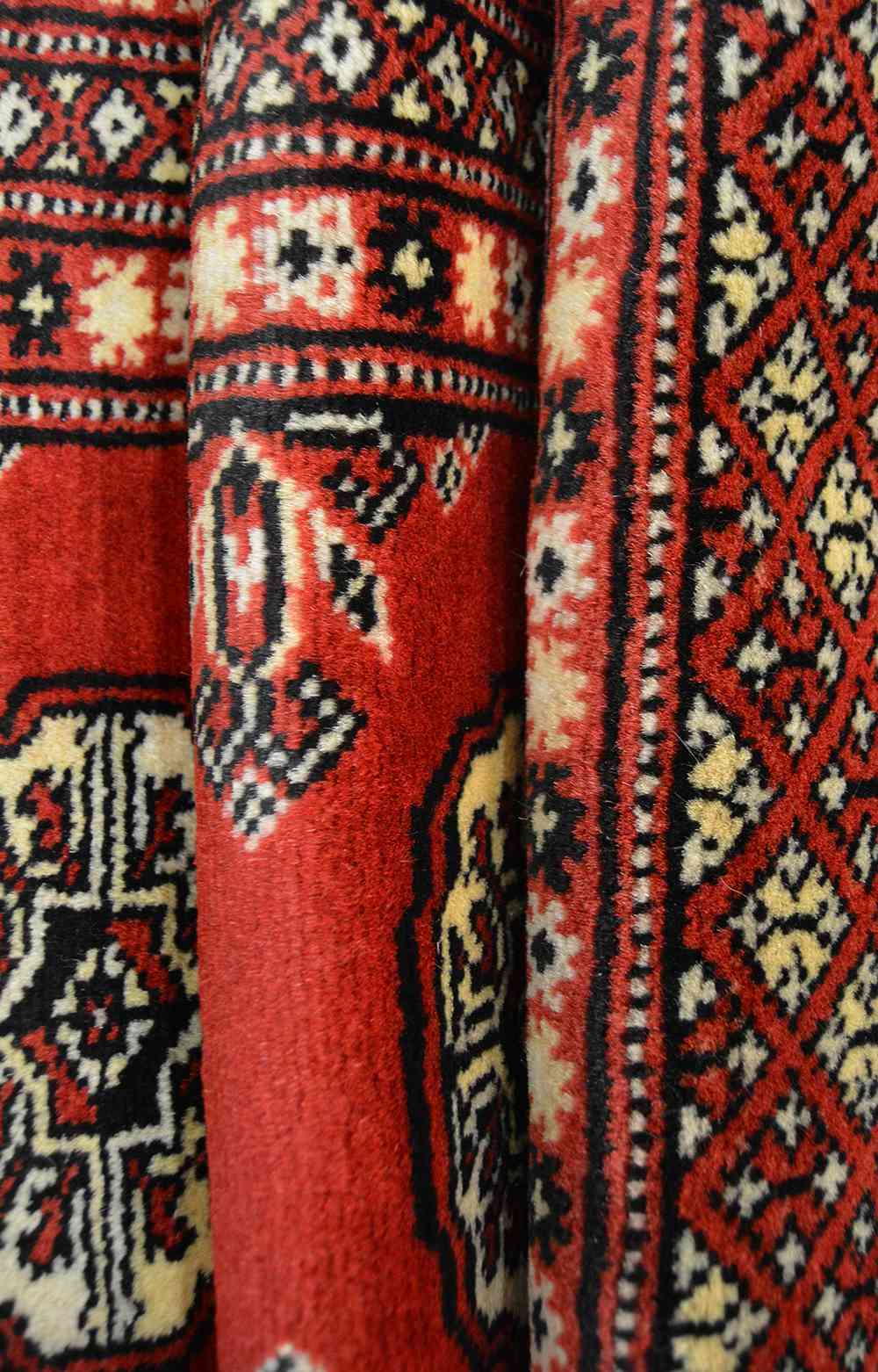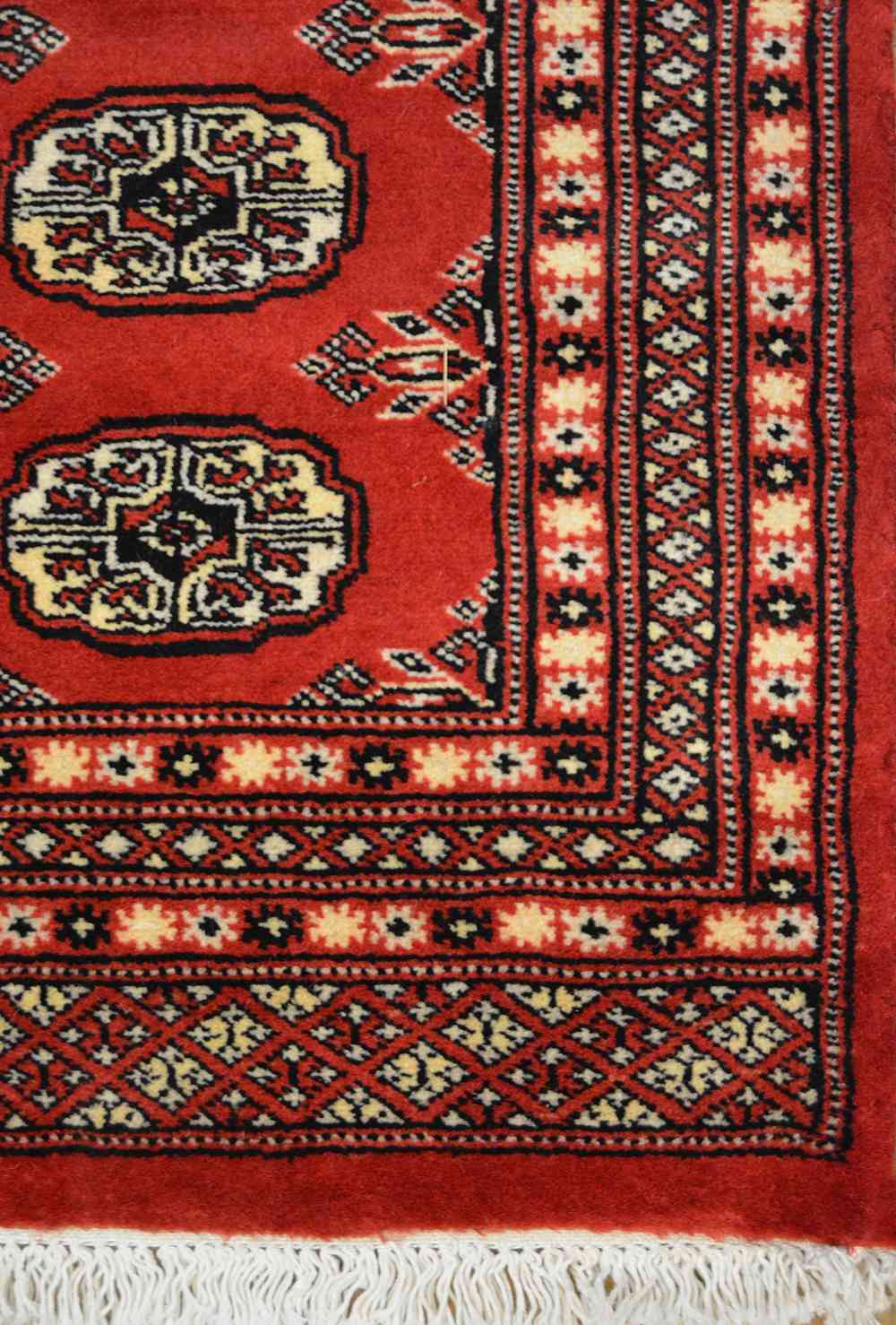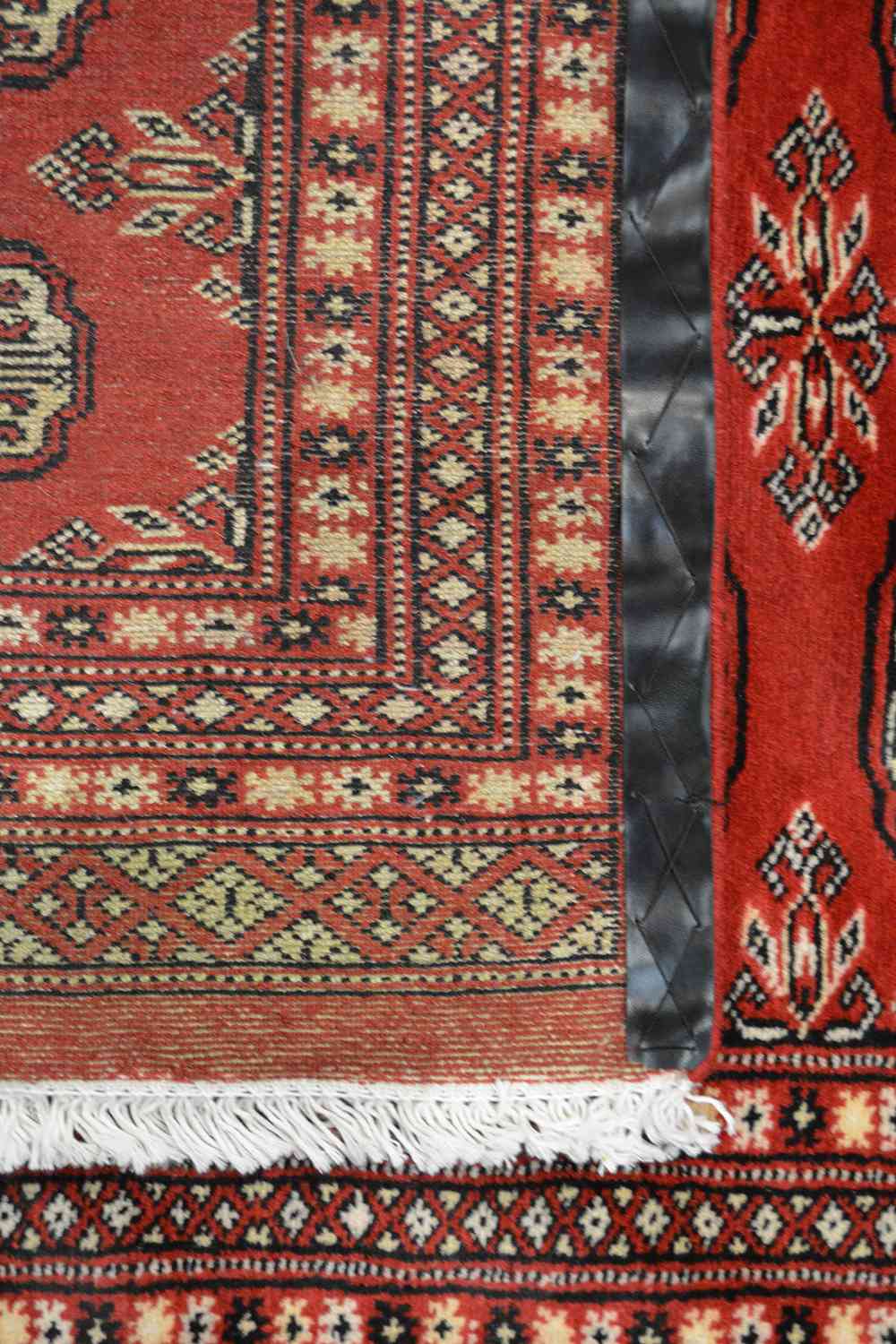A Brief History of Bokhara Rugs & Carpets
 Bokhara is a term widely used in the West to refer to carpets and rugs made by various Turkmen tribes of Central Asia. Their history dates back centuries. The Turkomans were situated to the north of what is now called Afghanistan. During the early 1900s, the name of Bukhara, a city in Uzbekistan, was given to these rugs. The Turkomans were an industrious people who would barter their trade for food, clothing, etc. As a result, their weaving would invariably show up in bazaars (a type of market) in cities such as Bukhara, hence the name. The city did serve as a transit point for some Turkmen rugs on their way to the West. Nowadays, Bokharas are considered among the finest carpets in Afghanistan and Pakistan, distinguished by their extra fine knots and soft, silky touch. They are also popular worldwide due to their suitability to almost any space.
Bokhara is a term widely used in the West to refer to carpets and rugs made by various Turkmen tribes of Central Asia. Their history dates back centuries. The Turkomans were situated to the north of what is now called Afghanistan. During the early 1900s, the name of Bukhara, a city in Uzbekistan, was given to these rugs. The Turkomans were an industrious people who would barter their trade for food, clothing, etc. As a result, their weaving would invariably show up in bazaars (a type of market) in cities such as Bukhara, hence the name. The city did serve as a transit point for some Turkmen rugs on their way to the West. Nowadays, Bokharas are considered among the finest carpets in Afghanistan and Pakistan, distinguished by their extra fine knots and soft, silky touch. They are also popular worldwide due to their suitability to almost any space.
Bokhara carpets contain a repeating motif known as the "gul" which are commonly found on its main field in larger sizes and found on its borders in smaller sizes. A gul (also spelled as gol, göl or gül) is a medallion-like motif typically found in traditional hand-woven carpets from Central Asia, West Asia and parts of South Asia. These motifs are very ancient and animistic in origin, pre-dating Islamic and Christian times. The origin of the term is uncertain and it is disputed to this day. In Farsi, the language spoken in modern day Iran, it is said to mean "flower" or "rose". Meanwhile in the Turkish language, the term gül means a "rose" or a "roundel" or even a "lake".
The symbolism behind this motif is equally disputed. Their octagonal guls are sometimes referred to by carpet specialists as the elephant's foot in reference to the elephants that would traditionally transport Mughal Empire royalty on their journeys. Other specialists claim that they represent jewels resembling those that adorned the palace walls and crowns of Mughal royalty. This is said to be the case specifically for the Bokharas produced in Afghanistan and Pakistan which are both countries that were ruled once by the Mughal Empire at its greatest extent, in the late 17th and early 18th centuries. Some handmade carpet specialists claim that the rounder guls do not have any relation to Mughal Empire royalty but instead represent celestial bodies such as the sun, moon or stars. They also claim that the more geometric shaped guls such as the lozenge-shaped ones signify women and that when they are attached to other guls they signify women and men together joining hands. Therefore, it is left to our imagination as to the real meaning behind each variety of gul. To view more Bokhara rugs, we invite you to visit our Bokhara Collection.
Sources and inspiration: Bérinstain, Valérie, et al. L'art du tapis dans le monde (The art of carpets in the world). Paris: Mengès, 1996. Print.; Jerrehian Jr., Aram K.A. Oriental Rug Primer. Philadelphia: Running Press, 1980. Print.; Herbert, Janice Summers. Oriental Rugs, New York: Macmillan, 1982. Print.; Hackmack, Adolf. Chinese Carpets and Rugs, Rutland and Tokyo: Tuttle, 1980. Print. ; De Moubray, Amicia, and David Black. Carpets for the home, London: Laurence King Publishing, 1999. Print.; Jacobsen, Charles. Oriental Rugs A Complete Guide, Rutland and Tokyo: Tuttle, 1962. Print.; Bashir, S. (n.d.). Personal interview.; Web site sources and dates of consultation vary (to be confirmed). Without prejudice to official usage.










 Bokhara is a term widely used in the West to refer to carpets and rugs made by various Turkmen tribes of Central Asia. Their history dates back centuries. The Turkomans were situated to the north of what is now called Afghanistan. During the early 1900s, the name of Bukhara, a city in Uzbekistan, was given to these rugs. The Turkomans were an industrious people who would barter their trade for food, clothing, etc. As a result, their weaving would invariably show up in bazaars (a type of market) in cities such as Bukhara, hence the name. The city did serve as a transit point for some Turkmen rugs on their way to the West. Nowadays, Bokharas are considered among the finest carpets in Afghanistan and Pakistan, distinguished by their extra fine knots and soft, silky touch. They are also popular worldwide due to their suitability to almost any space.
Bokhara is a term widely used in the West to refer to carpets and rugs made by various Turkmen tribes of Central Asia. Their history dates back centuries. The Turkomans were situated to the north of what is now called Afghanistan. During the early 1900s, the name of Bukhara, a city in Uzbekistan, was given to these rugs. The Turkomans were an industrious people who would barter their trade for food, clothing, etc. As a result, their weaving would invariably show up in bazaars (a type of market) in cities such as Bukhara, hence the name. The city did serve as a transit point for some Turkmen rugs on their way to the West. Nowadays, Bokharas are considered among the finest carpets in Afghanistan and Pakistan, distinguished by their extra fine knots and soft, silky touch. They are also popular worldwide due to their suitability to almost any space.  Tapis d'Orient Bashir | Bashir Persian Rugs
Tapis d'Orient Bashir | Bashir Persian Rugs
 @tapisbashir
@tapisbashir
 @bashircarpets
@bashircarpets
 @bashircarpets
@bashircarpets